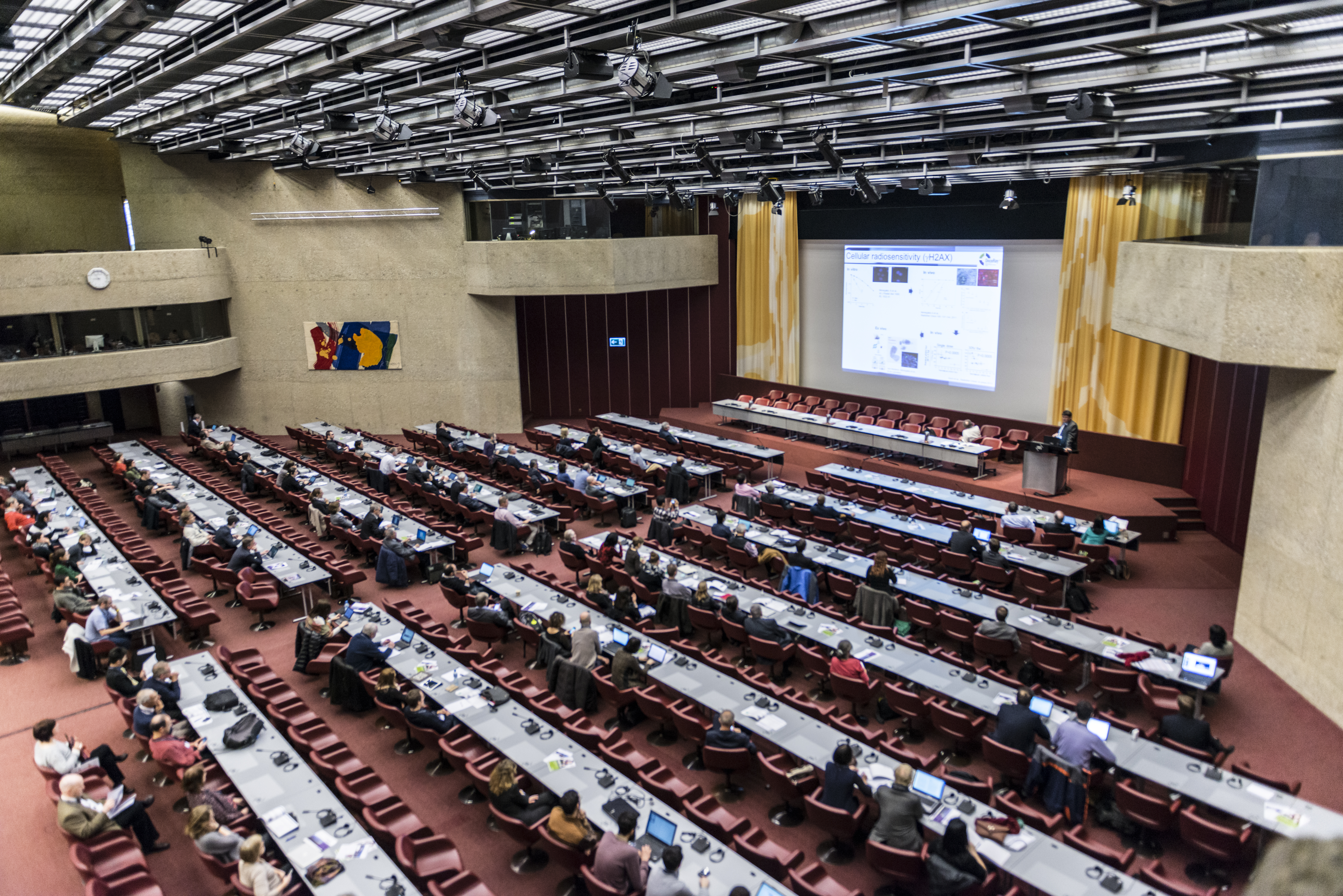 Latest developments in medical physics research
Latest developments in medical physics research
by Livia Lapadatescu (CERN)

ICTR-PHE 2014 took place in the International Conference Centre in Geneva (CICG).
Image credit: ICTR-PHE 2014.
Researchers from around the world gathered in Geneva to discuss the latest developments in cancer diagnosis and treatment during ICTR-PHE 2014 (International Conference on Translational Research in Radio-Oncology and Physics for Health in Europe), held between 10 and 14 February.
The 5-day conference covered a variety of topics from radiobiology, nuclear medicine, detectors and imaging, to host and tumour immunity, radio-therapeutic control of tumours, and clinical trials in hadron therapy. The involvement of CERN in medical physics research was highlighted in the talk by Steve Myers, recently appointed Head of CERN’s Medical Application Programme, and in the public lecture by Ugo Amaldi: Physics is beautiful and useful.
The development of compact and cost-effective accelerators for medical applications, the production of isotopes for research, and the establishment of BioLEIR at CERN were also addressed during the conference. Converting LEIR (The Low Energy Ion Ring) into a biomedical experimental facility will help investigate the effect of different ions on cancer cells, test innovative particle detectors and perform accurate nuclear fragmentation studies. The ISOLDE facility will provide beams to produce radioisotopes for medical applications, in the framework of the CERN MEDICIS project.
The need of uniting different disciplines: physics, chemistry, biology, medicine and even computer science (which could help in analyzing large databases) to develop better treatment and diagnosis for cancer was highlighted throughout the conference. Rendez-vous in 2016 for the next edition of ICTR-PHE.
Read more >>